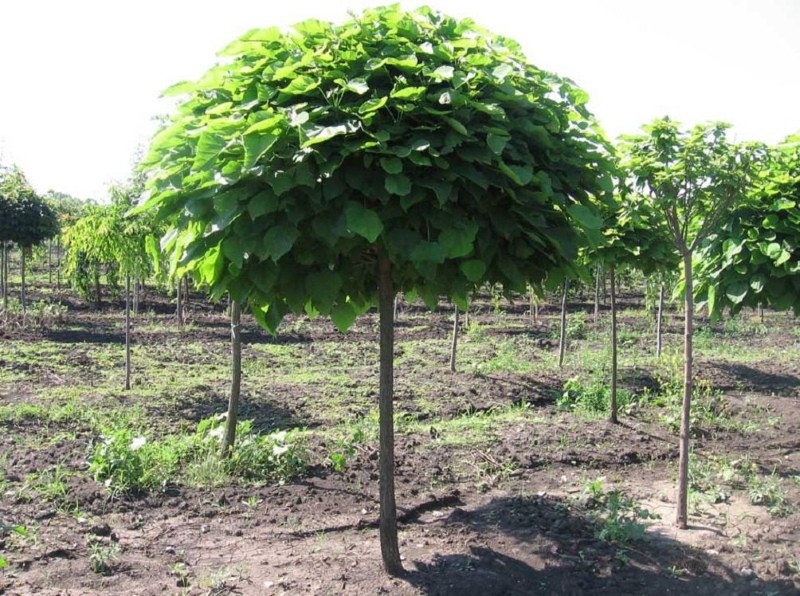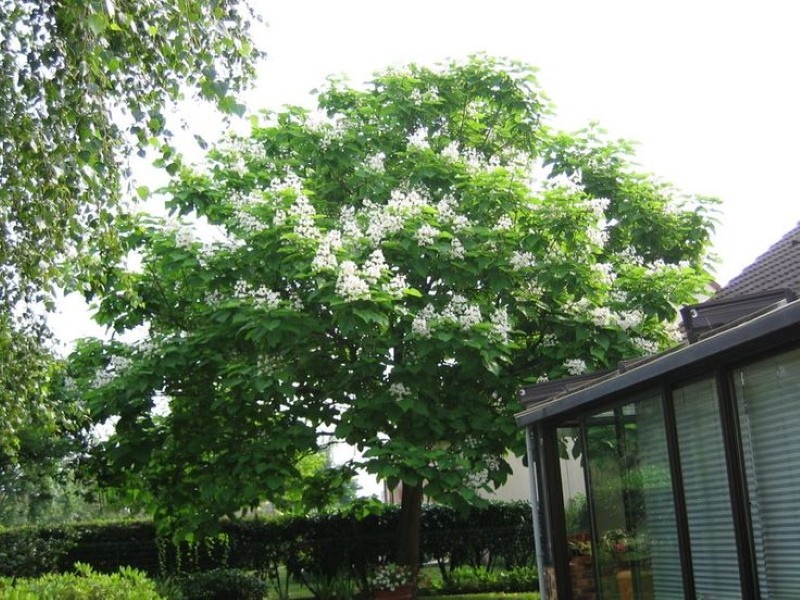We form the crown and maintain its shape - trimming the catalpa in spring
 For its incredibly beautiful and long-lasting flowering, it is called the “tree of happiness”, and for its very large leaves it is called “elephant's ears”. A cozy shady corner for summer holidays is created under the spreading dense crown. Pruning catalpa in spring is one of the main activities that will help the tree maintain its original globular crown. A characteristic feature of the culture is its very rapid development. The annual growth is at least 60 cm, and under favorable conditions, the catalpa even lengthens its shoots by more than 1.5 m in a year.At the same time, it perfectly tolerates pruning, which not only helps to give and maintain the desired shape of the tree, but also prevents diseases wood. In the thickened crown, there is not enough light for all the shoots, they begin to stretch and bend. In addition, as a result of limited air access, various diseases can occur. Therefore, the catalpa must be cut off every year, and more than once.
For its incredibly beautiful and long-lasting flowering, it is called the “tree of happiness”, and for its very large leaves it is called “elephant's ears”. A cozy shady corner for summer holidays is created under the spreading dense crown. Pruning catalpa in spring is one of the main activities that will help the tree maintain its original globular crown. A characteristic feature of the culture is its very rapid development. The annual growth is at least 60 cm, and under favorable conditions, the catalpa even lengthens its shoots by more than 1.5 m in a year.At the same time, it perfectly tolerates pruning, which not only helps to give and maintain the desired shape of the tree, but also prevents diseases wood. In the thickened crown, there is not enough light for all the shoots, they begin to stretch and bend. In addition, as a result of limited air access, various diseases can occur. Therefore, the catalpa must be cut off every year, and more than once.
When is the best time to prune

The second stage of catalpa formation takes place in late spring, after it has finished blooming. By this time, suckers may already appear on the trunk or from the roots, as well as sprouts along the branches. Usually they violate the intended outline of the crown and must also be removed.
Pruning catalpa in spring - features of the procedure depending on its type
 First of all, in the spring, sanitary pruning is carried out, the purpose of which is to free the tree from unnecessary and damaged shoots. Also, at the beginning of the growing season, the crown begins to form.
First of all, in the spring, sanitary pruning is carried out, the purpose of which is to free the tree from unnecessary and damaged shoots. Also, at the beginning of the growing season, the crown begins to form.
Catalps, grown from seed, have a feature to bend after transplanting the seedling to a permanent place. In this case, the tree cannot be spared: it is drastically cut off, under the stump. As a result, a lot of young growth appears, from which the smoothest and strongest shoots are chosen and already from them they form a tree. The rest of the gain must also be removed.
Sanitary pruning
 During spring sanitary pruning, the following branches are completely cut:
During spring sanitary pruning, the following branches are completely cut:
- dry;
- frozen;
- affected by the disease;
- growing inside the crown;
- intersecting.
Formative pruning
 Catalpa is usually shaped like a standard tree. For this:
Catalpa is usually shaped like a standard tree. For this:
- The stem begins to form at a level of at least 40 cm from the soil, removing all branches growing on the trunk below this mark.
- To create a round crown, skeletal branches in the amount of 4-5 pieces are chosen, growing from the trunk at a wide angle. They should be as evenly spaced around the stem as possible. The rest are cut out.
- If the skeletal shoots are stretched and do not want to branch, the top is cut off.This contributes to the thickening of the branch and the appearance of lateral processes.
After the main formation, the crown of the catalpa will only have to be maintained annually, removing the branches knocking out of it and thinning out.